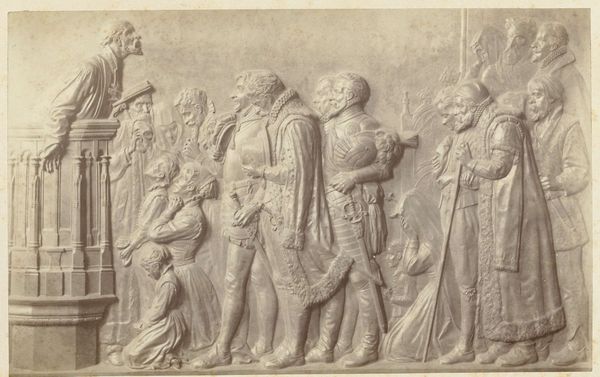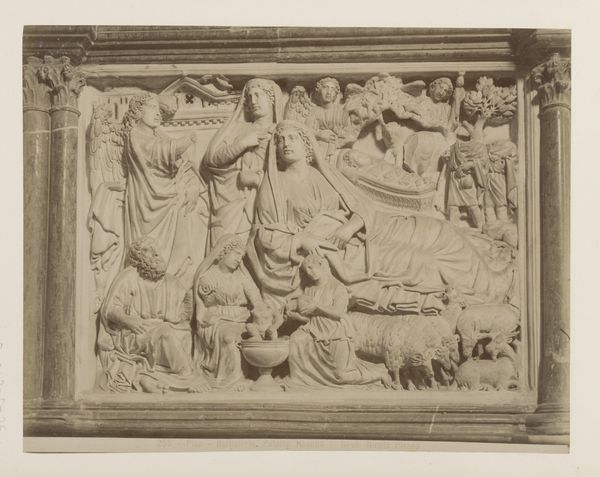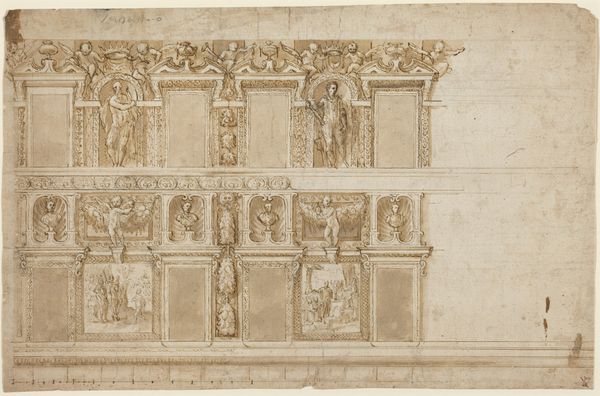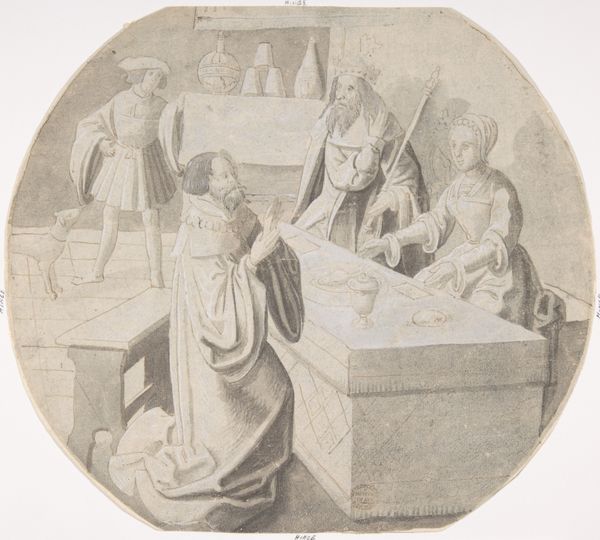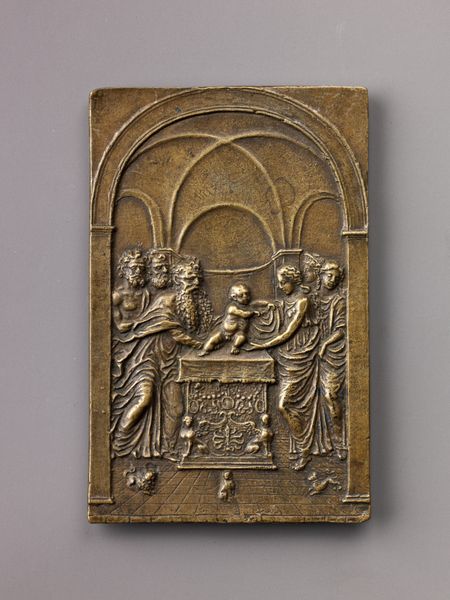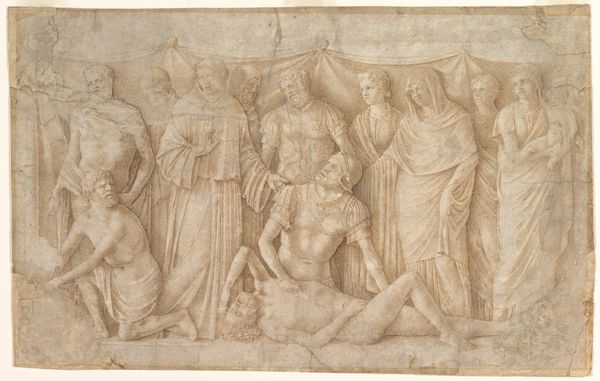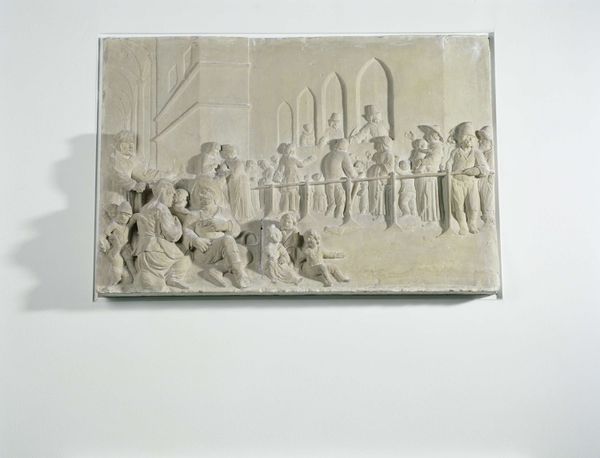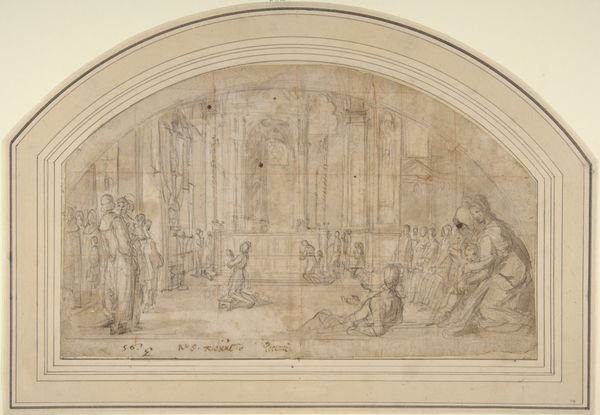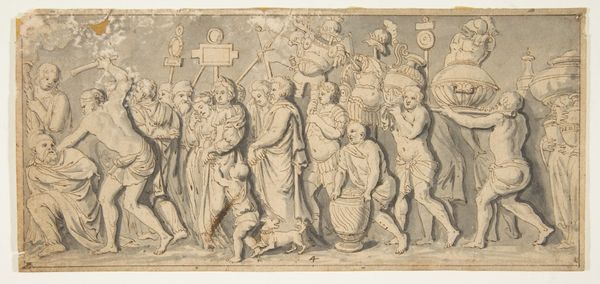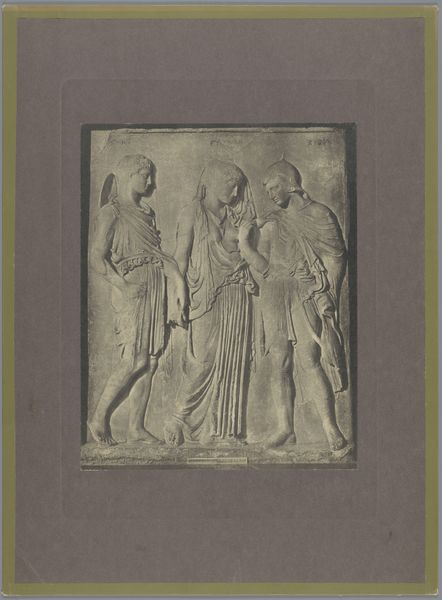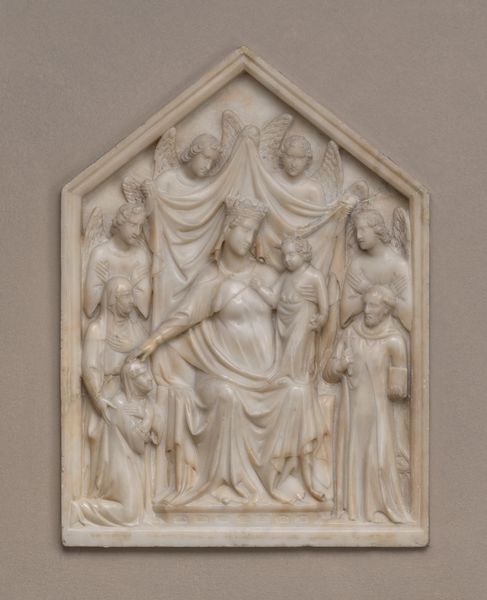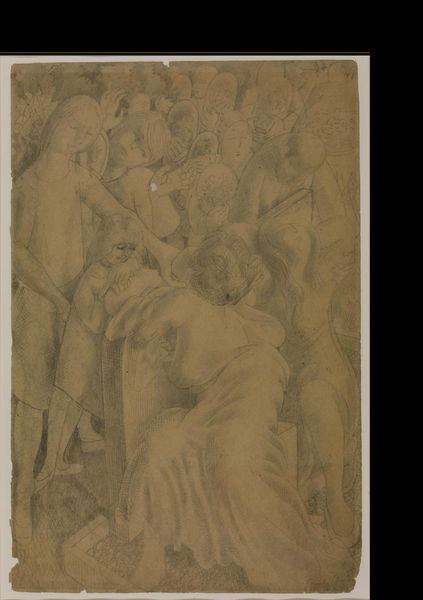
Registering of the Paupers, Stone Tablet from the Facade of the Nieuwezijds Huiszittenhuis in Amsterdam 1649
0:00
0:00
relief, sculpture
#
medieval
#
narrative-art
#
sculpture
#
relief
#
figuration
#
sculpture
#
history-painting
Dimensions: height 75 cm, width 113 cm, depth 20 cm, weight 188 kg
Copyright: Rijks Museum: Open Domain
Willem de Keyser carved this stone tablet for the facade of the Nieuwezijds Huiszittenhuis in Amsterdam in the late 17th century. It captures a poignant moment: the registration of paupers, those so desperately poor they required public assistance. Consider the weight of this scene during the Dutch Golden Age, a period celebrated for its wealth and artistic achievement, yet also marked by stark inequalities. De Keyser's relief offers a glimpse into the lives of those often unseen, standing in contrast to the dominant narratives of prosperity. The composition, with its careful arrangement of figures, invites us to reflect on the intersection of class, gender, and power. Notice the women, often with children in tow, seeking aid. Their posture, their clothing—these details speak volumes about their social standing and the burdens they carried. The judges, sitting behind the table, are men making decisions about the lives of women and children. This tablet is not just a historical document; it's a reminder of the human cost of economic disparities, prompting us to confront uncomfortable truths about poverty, dignity, and the complexities of social welfare.
Comments
No comments
Be the first to comment and join the conversation on the ultimate creative platform.
